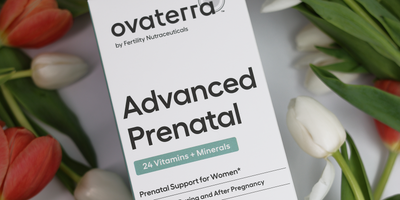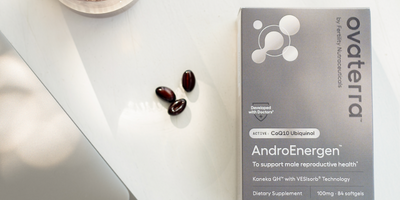Getting enough iodine from your diet is essential for the health of your thyroid hormones, which, in turn, supports your reproductive and prenatal health. However, it can be tricky to get enough iodine from diet for some women, especially because the iodine requirements increase during pregnancy and when nursing. Seaweed, a naturally rich source of iodine, can be a part of the answer.
Iodine is essential to reproductive health
The two thyroid hormones, T3 and T4, facilitate reproductive processes like menstrual cycles, ovulation and endometrium. A healthy level of these hormones also supports the fetal brain growth, with implications on the baby’s cognitive development even after births. To make T3 and T4, the body needs iodine. Each molecule of T3 has 3 atoms of this trace element, while T4 has 4, making iodine an indispensable ingredient of reproductive health and the baby’s neurological health.
In most developed countries, including the United States, outright iodine deficiency is rare. However, there are some groups that are at higher risk of insufficient iodine in their diet – and that includes pregnant and nursing women. If you are trying to get pregnant or are already pregnant, make sure you get enough iodine from your diet. (Of course, taking prenatal vitamins with iodine also helps!)
Common food sources of iodine aren’t for everyone
Typical food sources of iodine in the US include:
- Dairy products like yogurt and cheese: The amount of iodine can vary, depending on what the cows ate and a few other factors, but 1 cup of milk contains roughly 85 mcg of iodine.
- Iodized salt: While a good source of iodine at about 76 mcg per ¼ teaspoon, people who need to limit sodium intake for health reasons can’t overdo it just to get their iodine intake up. Those who like more mineral-rich, flavorful salts – like sea salt, fleur de sel or even kosher salt – don’t get iodine from salt, either.
- Seafood like cod and oysters: A 3-oz serving of cod contains 158 mcg of iodine. Mercury content, however, can be a concern for pregnant women, depending on the species, as is cost.
- Organ meats like liver: OBGYN doctors are hesitant to recommend liver and other organ meats during pregnancy, due to the risk of contamination.
As you can see, however, these common iodine sources in the typical American diet all have their drawbacks. This is where seaweed comes in.
Incorporate iodine-rich seaweed in your diet
Seaweed is probably the most efficient source of iodine. The actual amount depends on the species and its habitat (seaweed accumulates iodine from the seawater in which it grows), but seaweed in general has the highest amount of iodine per serving.
- Nori: Nori is the dried sheet of seaweed used to wrap sushi rolls and Japanese rice balls. Korean rice rolls (kimbap) also uses nori as a wrapper. A full sheet of nori (about 7 x 8 inches) contains 70 mcg of iodine, providing about a third of daily iodine need for pregnant women.
- Wakame: Wakame is the dark green seaweed you see floating around in your bowl of miso soup. Just one tablespoon of wakame contains 210 mcg of iodine.
- Kombu: Not to be confused with the unrelated kombucha, kombu is a kelp often used as a umami-rich base for soups and broths in Japanese cooking. Kombu has by far the largest amount of iodine among the three seaweeds listed here, at over 2,500 mcg per just 1 gram.
5 ways to eat more seaweed – without the fuss
Aside from eating more sushi rolls and miso soup with wakame, there are a lot of ways to incorporate more iodine-rich seaweed into your diet. Here are easy 5.
- Nori snacks: Crispy, roasted nori snacks have become more widely available in recent years. Ready to eat, they are probably the easiest way to incorporate seaweed into your routine.
- Nori salad sprinkles: Tear up a sheet or two of nori and sprinkle on top of your salads. It’s a particularly delicious addition on salads with Asian-leaning dressings.
- Wakame salad: Soak dried wakame in water for a couple of minutes and gently squeeze out the water. Mix into any salad for an instant iodine boost. Wakame can be a particularly delicious addition to tuna or potato salads. (No need to cook it.)
- Korean wakame soup: Soak dried wakame in water as above, then stir-fry it briefly in sesame oil, along with thinly sliced beef (if you are an omnivore). Season with salt and pepper and add water, soy sauce and minced garlic. Cook on medium heat for 10 minutes or so, until the beef is cooked through. Serve with rice or make it into a noodle soup.
- Kombu broth/dashi: Using kombu to make broth is an easy way to add umami to your soups and sauces, while getting a serious boost on your iodine intake. Methods vary, but soaking a 5-inch piece of dried kombu in 4-5 cups of cold water overnight, then briefly simmering it in the water it soaked in, no more than 10 minutes, is all it takes.
More seaweed ideas
The internet is chock full of seaweed recipes. Aside from Saveur, Bonapetit, Brit & Co and others, Stonington Kelp Co, a sustainable sea farm that grows kelp in Connecticut, has a selection of inspired seaweed recipes – including a kelp chocolate chip cookie recipe (!). Be sure to scroll down to the free seaweed cookbook PDFs, too.
Word of caution on seaweed
It is possible to get too much iodine from kombu, given the extremely high concentration of iodine. Excessive iodine doesn’t appear to cause thyroid problems, but studies have suggested that it can worsen existing thyroid issues.
Another potential concern for pregnant and nursing women is that seaweed can accumulate harmful heavy metals like mercury. It is difficult to estimate the amount of heavy metals in each specimen, because it depends on the growing condition, but studies have found that even a moderate amount of seaweed can contain heavy metals exceeding some countries’ daily recommended limit.
If you need help balancing the iodine benefits of seaweed and risk of heavy metal contamination – or have an existing thyroid condition and need to be careful about iodine intake, talk to your doctor or a dietitian. They can advise you on whether incorporating more seaweed into your diet is a good move for you toward reproductive and prenatal health.












